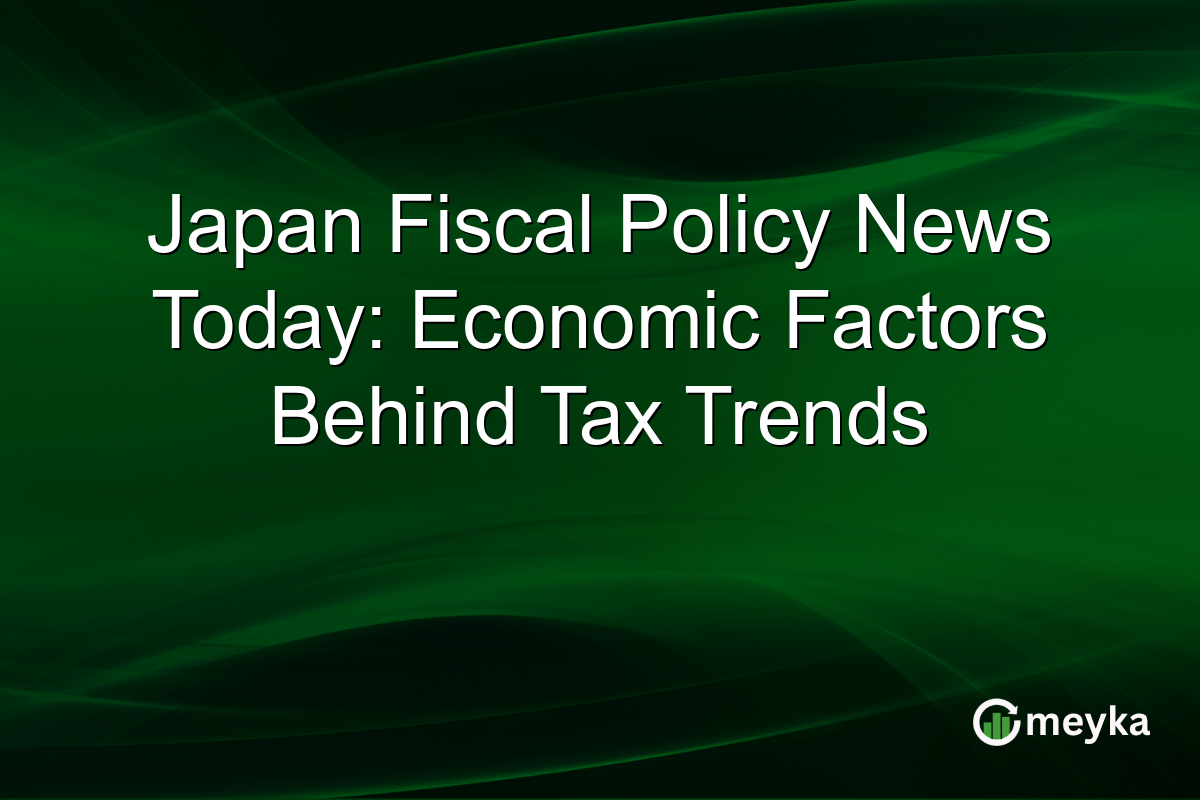Japan Fiscal Policy News Today: Economic Factors Behind Tax Trends
Japan’s fiscal policy in 2025 is characterized by significant shifts, notably a 50% rise in interest related to the country’s tax declaration process. These changes reflect Japan’s adaptive strategies in response to global economic uncertainties. Understanding these tax trends is essential not only for financial analysts but also for businesses operating within Japan. By examining the underlying fiscal policies, stakeholders can better navigate the economic landscape and anticipate potential impacts on economic growth.
Understanding Japan’s Fiscal Policy in 2025
Japan’s fiscal policy for 2025 focuses on mitigating the economic challenges posed by a volatile global market. The government aims to stabilize the national debt while stimulating economic growth. This dual approach involves a mix of increased taxation and strategic public spending. Analysts stress the importance of this balance as Japan deals with an aging population and a slowing domestic economy. The recent tax interest changes are part of this broader strategy to maintain fiscal health.
Key Drivers Behind Japanese Tax Trends
The Japanese tax trends of 2025 are driven primarily by economic factors including inflation control, national debt management, and investment in technology. Japan has seen inflationary pressures rise, prompting tax adjustments to manage consumer prices. Additionally, the government’s focus on reducing national debt has led to increased taxes on corporations and high-income individuals. This aligns with efforts to boost public coffers for future infrastructure and technological advancements.
Read more about recent discussions here.
Economic Impacts on Japan’s Future
The economic impact of these fiscal policies is crucial for understanding Japan’s future. Increased taxes may initially burden businesses, but the long-term goal is to create a sustainable economic environment. Investments in technology and infrastructure are expected to yield growth, positioning Japan competitively in the global market. Critics argue that these changes could slow economic momentum, but proponents believe they will lead to stability and innovation.
Final Thoughts
Japan’s fiscal policy and evolving tax trends reflect a strategic response to ongoing economic challenges. By increasing interest rates and adjusting taxes, Japan aims to balance debt reduction with growth opportunities. While these policies might strain some sectors in the short term, they are intended to foster a resilient and dynamic economy. For businesses and investors, understanding these trends is crucial for making informed decisions and seizing opportunities within this shifting landscape. Platforms like Meyka offer real-time insights into such developments, providing an edge in navigating Japan’s economic environment.
FAQs
Japan’s fiscal policy focuses on stabilizing national debt and boosting growth through tax increases and strategic spending. These changes are aimed at managing inflation and preparing for future investments.
The increased tax interest rates can initially burden businesses by raising operational costs, but are intended to support long-term sustainability and economic growth.
The increase is part of efforts to manage inflation, reduce national debt, and prepare for demographic challenges, ensuring a stable economic future while funding technological advancements.
Disclaimer:
This is for information only, not financial advice. Always do your research.






